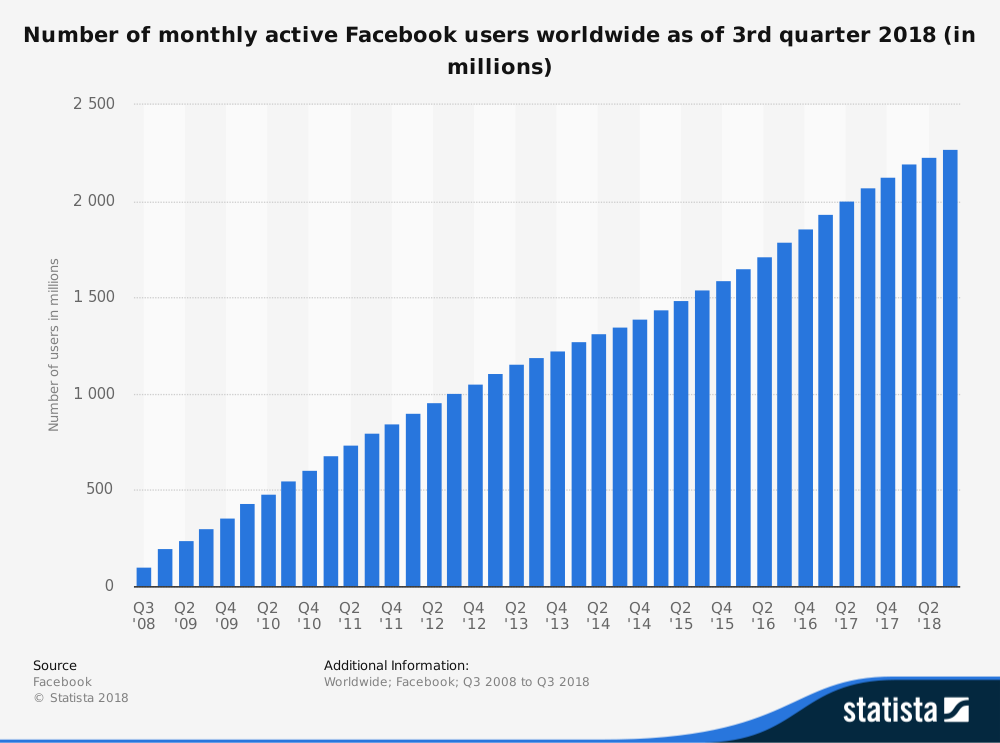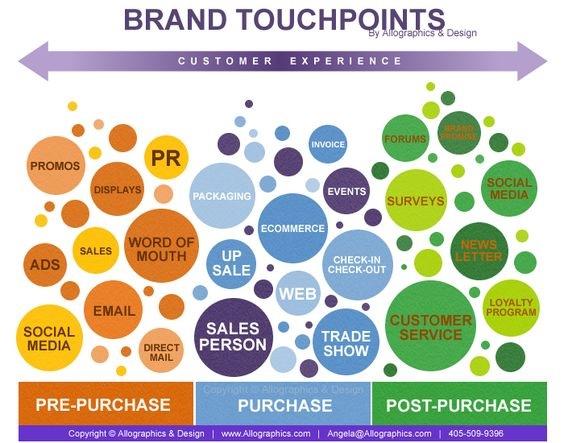A cursory look at any number of blog articles on improving your marketing will make one thing clear—you need to understand your customers to provide messaging that resonates with them.
It’s true.
But despite the prevalence of that advice, very few articles dive into the nuts and bolts of how you can learn about your customers reliably. With an unending number of tools, tactics, and social platforms that help you to get a true birds-eye view of your different customer segments, there are many ways in which companies can gain a deeper understanding of what matters to their customers.
As you look for ways to improve your knowledge, consider these actionable tips that can help you to facilitate conversations and encourage sharing:
Use Data and Conversations to Build Robust Customer Personas
One of the first recommendations you’ll find for better understanding your customers is to create customer personas. There’s a lot of data to support their importance. Using personas has been found to make websites two to five times more effective and easier to use for targeted users. Buyers are 48% more likely to consider products that personalize their marketing to address their specific business issues. Creating customer personas, in theory, should help you understand what’s important to each individual customer.
In practice, most companies don’t dive deeply enough into the concerns and needs of their different personas and instead, lean heavily on demographics like age, role, and location. These data points, while useful, are more precursory than actually valuable as you attempt to create marketing materials that resonate with those personas.
Ideally, you should be using data and information from several different sources to put together your customer personas. One simple tactic is to use the “Acquisitions” tab on your Google Analytics dashboard to see from what social media platforms, industry blogs, and discussion forums your traffic is reaching your website. Then, you can connect visitors from different sources to their matching customer personas and use those trends to flesh them out in a more meaningful way.
There is also often a disparity between keyword data and the personas that reach your website via those keywords. Keyword data is helpful when building customer personas because it allows you to discover and understand the terms your audiences use to describe and search for your product. This can be extremely helpful in understanding why your customers seek out a product like yours in the first place. Don’t let your keyword data live only in an SEO bubble!
Take more time fleshing out your buyer personas. Use sales calls, customer service tickets, and logged discussions through any channel to help inform your personas. You’ll find general trends among certain customer groups that will provide much more insight than you ever would just throwing them together yourself.
Create a Facebook Group
Today, Facebook has more than 2.2 billion active monthly users, making it very likely that a large portion of your customer base is active on the platform.

The biggest hurdle for most companies when it comes to understanding your customers is receiving a consistent stream of reliable and honest feedback. The truth is that most customers aren’t fully comfortable being honest about what they don’t like about your company or product. Maybe they would be more inclined to share in an anonymous review, but only a small percentage of your customers will take the time to leave a review on a public directory.
Honest discussions with customers can be tricky to navigate. But providing them with a private forum where they can share their opinions with other customers can be a great way to facilitate open discussion, while giving your team more reliable feedback to work with.
A Facebook group is the path of least resistance to creating a private forum for customers. They don’t have to create a new account, as most of your customers will already have a Facebook account. They don’t have to learn to use a new interface, as they’re already familiar with Facebook’s. Adoption is simple on a platform that a majority of your customers are already using for hours each and every day.
Further, discussions in well-moderated groups will show up on their main timeline feed. This helps your business to stay top of mind and provides another way to encourage conversations about your company and products. Giving your customers and your company a direct way to communicate with each other in an open setting is not only a great way to solicit feedback but also develops more meaningful relationships with the customers you do have.
Use Smart Customer Engagement Tools
The best way to learn more about your customers is to give them more opportunities to ask questions, provide feedback, and clue you into their feelings. Increasingly sophisticated marketing tools have allowed us to increase the number of times we connect with a customer over their lifetime, whether through automated emails, social media, live chatbots, or other technologies.
But those solutions are only being used at a fraction of their total potential. While most companies see them as a tool for generating sales, few actually realize the opportunity to improve relationships with current customers. In fact, only 18% of companies place their focus on customer retention over customer acquisition.
Existing customers are more likely to buy from you again. A current customer has a 60-70% probability of making another purchase, while a new prospect has only a 5-20% chance of making their first.
For that reason, it’s usually a better idea to invest your time and resources into retaining current customers and facilitating engagement with them. Doing so in real time has never been easier than it is today with dozens of different tools available. Website live-chat systems, Facebook Messenger, and text messages all provide real-time communication channels that allow you to quickly tend to the needs of your customers, while collecting valuable data you can use to inform your marketing campaigns.
Instead of using automated solutions solely for the purpose of growing sales, reframe the way you think about them. How could they be used to engage with current customers? Surveys and questions can be delivered to your customers through any number of channels, giving them simple and easy solutions for providing you with more proprietary data.
Use Negative Reviews to Facilitate Conversations
Companies far too often undervalue negative reviews. They see them as a nuisance—a public recanting of promises that threatens sales. While no company is happy to receive a negative review, they do provide a simple way to collect more information from your customers, past or present. Additionally, you can collect information from a segment that has a major influence on new revenue.
Disgruntled customers can help you to identify gaps in your messaging. Did the customer have a key misunderstanding about the product? Was your messaging clear? What assumptions did these customers make and what expectations weren’t fulfilled? Who has authored these reviews? Are their patterns indicative of who in the organization is the most (or least) happy with your product—and messaging adjustments you can make to the personas who are the least likely to have a positive experience?
Look at negative reviews as opportunities for improvement. Even the most spiteful feedback can provide valuable insights into handling customers that fall under specific personas or segments.
Don’t let negative reviews leave you discouraged. You’ll not only get to know your customers better but will also give yourself the chance to turn a dissatisfied customer into a repeat buyer.
Attend the Events Your Customers Attend
If you want to understand your customers, you have to spend time with them and get to know them. While this could be achieved through something as simple as taking a client out for lunch—nine in ten people say that small meetings are their favorite communication method—you can gain a lot more exposure to specific personas by attending larger events.
Listen to what current and potential customers have to say. Ask leading questions that are relevant to your product without giving them a full sales pitch. Instead, focus on planting a seed. View these conversations as a prime opportunity to better understand your customers as a whole, which is more valuable in the long-term than securing a single sale.
Leverage Your Support Platforms
Where do customers go when they have a question about your product? Or a question for your sales team? Most likely, your support team.
No matter what platform you use, your support tickets and conversations are an absolute goldmine for your marketing and sales teams. Companies that keep their support data completely separated from those departments are not only making their lives harder—they’re leaving revenue on the table.
Digging through support requests is a lot more time efficient than developing relationships with customers one by one. By digging into the questions that your customers have asked while using your product, you can see what features are important to each customer persona. You’ll know where their frustrations lie, what features they have a hard time understanding, and where each persona derives value from your product—each of which has the potential to impact a future marketing campaign.
Follow the Buyer’s Journey Yourself

Your team should know your buyer’s journey inside and out. But the only way to gain a complete understanding of the unique and dynamic journeys on which your customers embark is to actually see the process from their point of view.
Customer journey mapping is a strategy in which companies create an in-depth, graphical representation of the typical customer’s journey based on the different touch points throughout the process.
Take the time to follow the buying journey of individual customers inside different customer segments and persona groups. You’ll start to see trends emerging in the way they find your business, the problems they’re looking to solve, and the general order in which they engage with your marketing messaging.
Once you’ve followed enough individual journeys for your different target segments, start to put together a map of the broader customer journey. It’s rare that any two customer journeys look exactly the same (today, the customer journey is less linear than it was even five years ago). Still, try to spot patterns and draw assumptions about how different personas engage, when they become involved, and what messaging is most compelling for different members of the buying group.
Conversations Drive Understanding
Conversations are the fuel that drives all understanding of your customers. From the questions that they ask your support teams to what they share on social media, conversations are insights in your targets’ own words.
You’ve likely noticed that many of the tips I’ve shared today revolve around facilitating conversations with customers or tracking the interactions you already have.
That’s because building personas doesn’t have to be a mysterious process. If you want to know what your customers are thinking, just ask.


